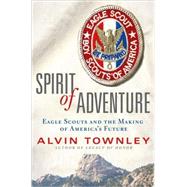
Note: Supplemental materials are not guaranteed with Rental or Used book purchases.
Purchase Benefits
What is included with this book?
Alvin Townley is an Eagle Scout, graduate of Washington and Lee University, and author of the acclaimed Legacy of Honor. He has traveled thousands of miles across the country and around the world to explore the legacy of Scouting and capture stories of character, purpose, and adventure. He lives in his hometown of Atlanta, Georgia.
Find out more, share your story, and get involved at www.AlvinTownley.com.
The New copy of this book will include any supplemental materials advertised. Please check the title of the book to determine if it should include any access cards, study guides, lab manuals, CDs, etc.
The Used, Rental and eBook copies of this book are not guaranteed to include any supplemental materials. Typically, only the book itself is included. This is true even if the title states it includes any access cards, study guides, lab manuals, CDs, etc.